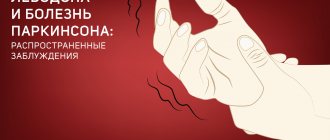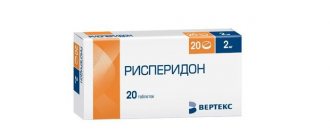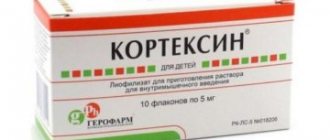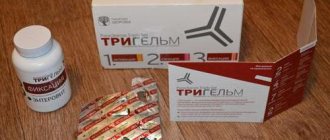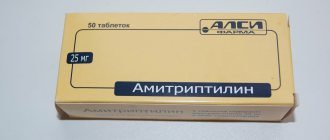A drug
Nowadays, more and more people are stressed. A person with a strong nature manages not to succumb to depression and is able to keep his emotions in hand. But, unfortunately, such people are few.
Many people experience stress and depression, which cause great damage to the entire body. If you experience insomnia or irritability, you must undergo a course of anti-depressant therapy.
One of the popular and sought-after drugs for eliminating stress is the drug Lorazepam. Instructions for use describe how to use the drug correctly.
Action of the medicine
The drug belongs to the group of anti-anxiety drugs that are used to treat panic attacks, neurasthenia and other disorders caused by a stressful situation.
The medicine is available in ampoules for intravenous and intramuscular administration, as well as in tablets.
Medicines “Clonazepam”, “Lorafen”, “Rivotril” are analogues of the drug “Lorazepam” with identical active ingredients.
The active substance of the drug has a sedative, hypnotic, anticonvulsant and antiemetic effect on the body. The medicine refers to drugs that have a medium-lasting effect in the treatment of anxiety and panic attacks.
The drug should be taken only as prescribed by a doctor and in a certain course to eliminate the possibility of addiction. Lorazepam has the same effect as Clonazepam.
The instructions, composition, indications and contraindications for these products are almost identical.
Indications
Medicines should be taken strictly as prescribed. Indications include:
- the need to normalize sleep during anxiety attacks and stressful situations;
- use in combination with other groups of drugs for the treatment of epilepsy;
- depressed states and various phobias;
- increased arousal and emotionality;
- migraine attacks;
- states of anxiety, agitation, manic disorders in schizophrenia;
- acute delirium due to alcohol poisoning;
- panic attacks;
- convulsive symptoms;
- all kinds of neuroses.
Lorazepam should not be prescribed to children under 12 years of age. The instructions for use also describe other contraindications. Among them:
- myasthenia gravis;
- closed-type glaucoma;
- alcohol intoxication;
- hypersensitivity to the components of the drug;
- bearing a fetus;
- breast-feeding;
Also, with great caution, you need to prescribe medicine for:
- porphyria;
- epilepsy;
- attacks of sleep apnea;
- closed glaucoma;
- shock states;
- lung diseases;
- severe depressive states;
- coma
The drug Clonazepam has the same contraindications for the treatment of depression. The instructions are mandatory to study before starting treatment.
Dosage
In most cases, the medicine is prescribed at a dose of 2 mg, divided into three doses per day.
In the morning and afternoon you need to drink half the dosage of the drug, and the rest should be taken immediately before bed. Do not suddenly stop taking the medication.
The same recommendations apply to Clonazepam. Instructions for use (2 mg), reviews, dosage - all this information should be studied before starting treatment.
In general, the drug is well tolerated. In rare cases, the following side effects may develop:
- increased fatigue;
- amnesia;
- headache;
- dizziness;
- nausea;
- dry mouth;
- diarrhea;
- pain in the epigastric region.
The drug belongs to group B and is sold in pharmacies only by prescription, like Clonazepam. Instructions, analogues, composition of the medicine - all this can be found out from the article.
"Clonazepam"
An antiepileptic drug that belongs to the group of benzodiazepine derivatives. It has a calming, hypnotic, anti-anxiety and anti-emetic effect on humans. The main substance of the tablets binds to plasma almost 100%.
It is excreted from the body in the form of metabolites. In humans, the drug Clonazepam suppresses paroxysmal activity of various types in a short time. Instructions for use, reviews from doctors - all this information is important. It is necessary to study it before starting treatment.
Indications:
- status epilepticus;
- West syndrome;
- tonic and clonic convulsions;
- epilepsy.
Contraindications:
- diseases of the lungs and bronchi;
- state of shock;
- closed-type glaucoma;
- pregnancy;
- lactation;
- intoxication due to alcohol and analgesic poisoning.
Side effects
- lethargy;
- drowsiness;
- lethargy;
- headache;
- dry mouth;
- diarrhea;
- tachycardia;
- decreased blood pressure;
- changes in blood counts;
- respiratory depression.
special instructions
The medicine is dispensed only with a doctor's prescription. Not recommended for patients with renal and hepatic insufficiency. If the profession is associated with increased attention and risk to life, the drug is prescribed with caution.
For older people and children under 12 years of age, it is better to administer the drug intramuscularly or intravenously. The medication Clonazepam should be stored away from children in a dry and dark place. Instructions for use, analogues - all information can be obtained from your doctor.
"Lorafen"
The medicine belongs to the group of tranquilizers, benzodiazepine derivatives. It has the following effects on the body:
- hypnotic;
- antiemetic;
- anti-anxiety;
- anticonvulsant.
When taken orally, the bioavailability of the substance reaches 100%. Half of the drug is excreted within 12 hours through the kidneys. The drug "Lorafen" is identical in composition to the drug "Lorazepam". The instructions for use are also practically the same.
Indications:
- anxiety states;
- sleep disturbance associated with depression;
- neuroses;
- panic attacks;
- epilepsy.
Contraindications:
- myasthenia gravis;
- closed-type glaucoma;
- intoxication of the body associated with drug poisoning;
- hypersensitivity to lorazepam;
- pregnancy;
- lactation.
Adults and children over 12 years of age should take the medicine in a dosage of 1 to 4 mg, dividing the daily dose into three doses.
For intramuscular and intravenous use of the drug, the dose is 50 mg per kilogram of body weight. The course of treatment depends on the severity of the disease and the individual characteristics of the organism.
The maximum permissible dosage of the drug in tablets is 10 mg per day, in the form of injections - 4 mg.
In general, Lorafen is well tolerated and does not cause side effects, just like Clonazepam. Instructions for use (tablets) describe a number of symptoms that may be observed at the beginning of therapy. These include:
- migraine;
- nausea;
- diarrhea;
- dizziness;
- exacerbation of thrombophlebitis;
- drowsiness.
"Rivotril"
Belongs to the group of antiepileptic drugs, benzodiazepine derivatives. It has a calming, anti-anxiety, antiemetic effect on the human body. The product helps get rid of neuroses associated with depression and stress. Psychotherapists often use this medicine in their practice.
Indications:
- status epilepticus;
- epilepsy;
- tonic and clonic convulsions;
- insomnia;
- anxiety;
- stress;
- depressive states.
All these indications for use are identical to the drug Lorazepam. Instructions for use contain detailed information about the release form and properties of the medicine.
Contraindications:
- severe diseases of the lungs and bronchi;
- closed glaucoma;
- severe depression;
- intoxication associated with poisoning with drugs or alcohol.
Reviews
The drug "Lorazepam" and its analogues are popular among patients and doctors. In most cases, the drug is well tolerated, helps to normalize sleep in a short time, reduce epileptic seizures, get rid of stress and depression without harm to the body. If you adhere to the correct dosage, the product does not cause side effects.
Before starting treatment, you should carefully study the instructions for use, which will tell you in detail about the drug and its contraindications.
The course of treatment should not exceed one month, otherwise an addiction syndrome may develop, which is fraught with serious complications.
Experts note that treatment can be prescribed only after examination and diagnosis. It is not possible to purchase anti-depressant drugs without a prescription.
Negative statements about the described medications are also found. You can hear them most often from patients who neglect the doctor’s recommendations. Medicines must be taken in the dosage specified in the instructions.
Do not suddenly stop taking the pills. Experts note that this can lead to a sharp deterioration in well-being. If everything is done correctly, side effects develop quite rarely.
Some patients note that at the beginning of therapy, drowsiness, dizziness, and apathy may occur.
Lorazepam is an excellent remedy for fighting depression. The instructions for use describe in detail what the effect of therapy should be. But this is not a panacea. It is worth finding the cause of neuroses and trying to eliminate it. It would be a good idea to consult a psychotherapist. It is worth remembering that depression can lead to the development of serious abnormalities in the functioning of any body system.
Source: https://FB.ru/article/252368/preparat-lorazepam-instruktsiya-po-primeneniyu-analogi-i-otzyivyi
Lerivon's analogues
Currently, there are many analogues of the antidepressant Lerivona . The cost of medicines produced in Russia is significantly less. Therefore, the selection of a substitute drug for Lerivon can only be carried out by a qualified doctor.
Antidepressant analogues of Lerivon are similar in therapeutic effect and impact. But they differ in origin and composition of active components.
The most accessible and widely used drugs are analogues of Lerivon:
- Pyrazidol is an inexpensive analog produced in Russia (Pharmstandard). The active substance here is pyrlindole hydrochloride. Available in tablets of 25 mg or 50 mg. Prescribed for Alzheimer's disease in a complex set of medications, for alcohol withdrawal syndrome and various types of depressive conditions.
- Azafen – Russian drug (Nizhpharm). Its main active component is pipofesin monohydrate dihydrochloride. Release form: 25 mg tablets. Indications for use are very similar to Lerivon.
- Neuroplant is a German drug (Dr. Wilmar Schwabe GmbH & Co. KG). Here the active substance of plant origin is St. John's wort extract (3–7:1). It is produced in tablet form, which contains 300 mg of extract. Used to treat depression, relieve anxiety and constant nervous tension.
In addition to them, Lerivon's analogues are Venlaxor, Mirtazapine Sandoz, Cymbalga, Velaxin, Prefaxin, Remeron, Mirzaten, Esprital 45, Melitor, Deprim Forte, etc.
Lorivan/Lorazepam. Instructions for use
Available in tablets.
One tablet contains:
Active substance: lorazepam 1 mg
20 pcs. – blisters (2) – cardboard packs.
Contraindications
- hypersensitivity to the constituent components of the drug;
- angle-closure glaucoma;
- depressive neuroses;
- myasthenia;
- acute intoxication;
- pregnancy and lactation;
- age up to 13 years (efficacy and safety have not been established);
The medicine is used with caution in the following conditions: during liver damage; heart failure; during hypotensia; with multiple sclerosis; with reduced body weight.
Overdose
Symptoms: drowsiness, hypotension, confusion, depressed reflexes, coma.
Treatment: induction of vomiting, gastric lavage, intravenous administration of norepinephrine to increase blood pressure, symptomatic therapy, monitoring of vital functions. Administration of a specific antidote—the benzodiazepine receptor antagonist flumazenil (in a hospital setting).
Drug interactions
Lorazepam enhances the effect of central nervous system depressants, incl. phenothiazines, narcotic analgesics, barbiturates, antidepressants, hypnotics, anticonvulsants, antihistamines with a sedative effect.
Potentiates the effect of general and local anesthetics, enhances the effect of curare-like drugs.
When used simultaneously with alcohol, in addition to enhancing the inhibitory effect on the central nervous system, paradoxical reactions are possible (psychomotor agitation, aggressive behavior, state of pathological intoxication). Nicotine inhibits the activity of lorazepam (accelerates its metabolism).
Side effects
From the nervous system and sensory organs: lethargy, fatigue, drowsiness, disorientation, headache, dizziness, depression, ataxia, sleep disturbance, agitation, visual impairment, episodes of amnesia.
From the gastrointestinal tract: dry mouth, nausea, vomiting, diarrhea, change in appetite.
From the skin: erythema, urticaria.
Other: changes in blood composition (leukopenia), increased LDH activity.
The development of addiction, drug dependence, withdrawal syndrome, rebound syndrome is possible (see “Special Instructions”).
Storage conditions
Store out of the reach of children at a temperature not exceeding 25°C.
Source: https://lechimvizraile.ru/articles/lorivan_lorazepam_instruktsiya_po_primeneniyu/
pharmachologic effect
Antidepressant with a sedative component. Lerivon's active substance, mianserin, belongs to the group of piperazine-azepine compounds (truly tetracyclic), which distinguishes the drug from tricyclic antidepressants. The chemical structure of Lerivon lacks a side chain, which determines the anticholinergic effect of tricyclic antidepressants. In terms of antidepressant activity, the effectiveness of Lerivon is comparable to other modern antidepressants. Moreover, its peculiarity is its anxiolytic effect and positive effect on sleep.
Lorazepam (Ativan) – addiction and its consequences
articles:
Lorazepam (commercial name Ativan) belongs to the benzodiazepine group of drugs, its purpose is to treat anxiety conditions.
Along the way, it relieves excitement of the nervous system, eliminates insomnia, relaxes muscles, and helps with cramps and nausea. It is recommended to use the drug for no more than four weeks; therapy should be carried out strictly according to the regimen prescribed by the doctor.
Since this medicine is addictive, it should be used for short-term treatment.
What is Lorazepam, origin, history
Lorazepam is an indispensable remedy for stopping a rapidly developing anxiety attack. It can be used before surgery, visiting the dental office, and in other situations that create a feeling of fear. Take it 10 minutes before the procedure, this helps reduce tension during the period of anticipation of pain or trouble.
https://www.youtube.com/watch?v=CINaD3N5Y7M
This drug is on a par with diazepam, clonazepam, oxazepam, nitrazepam, flurazepam, bromazepam and clorazepate.
These are the “classical” benzodiazepines, effective anti-anxiety medications that are used throughout the world.
Lorazepam, under the trade names Activan and Temesta, appeared on the market in 1977, it was brought to the market by the pharmaceutical company Wyeth Pharmaceutical. The president of the development group was D.J. Richards. The product was patented in the USA.
The medicine is available in the form of injection solutions and tablets. Modern pharmacology has mastered the production of Lorazepam in the form of skin patches and mouthwash.
Impact on the body
The therapeutic value of the drug lies in the fact that it not only treats panic attacks, but also alleviates neurotic conditions caused by stress.
- It is indicated for muscle tension as a muscle relaxant. Relief of muscle spasms occurs quickly and regardless of the cause of their occurrence - psychological or physical during training.
- The medicine for seizures is effective.
- The drug is used for epileptic seizures (with caution).
- The drug has a sedative and hypnotic effect.
- It can help prevent vomiting.
It must be remembered that with abuse and frequent use, its effectiveness decreases, but addiction to it may develop.
How does Lorazepam addiction occur?
As a rule, addiction begins after the therapeutic use of the drug is violated. This applies to the dosage and duration of treatment. The course should not last more than four weeks, and the maximum dosage should not exceed:
- in ampoules from 4 to 8 ml;
- in tablets from 0.5 to 2.5 mg, intermediate - 1.2 mg.
- Regular intake is recommended two or three times or four times a day.
If the patient begins to violate the regimen of using the medicine, he exposes himself to the danger of becoming dependent, which falls into the category of drug addiction. Peak effects in abusers occur 10 minutes after injection into a vein and an hour after intramuscular injection. During oral administration, this period is extended and amounts to 90-120 minutes.
Drug addiction?
Get a consultation now
Signs of use
A person who abuses Lorazepam can be identified by very specific signs. His behavior and physical condition changes.
- He is often in a state of euphoria
- It is characterized by apathy and drowsiness.
- There are attacks of inexplicable aggressiveness in everyday life and in communication at work
- His mood can change dramatically in a short period of time.
- He is disorganized and forgets to do his duties.
- His gait becomes uncertain and shaky. When standing, he staggers.
- There are noticeable defects on the skin.
- He is observed to frequently fall into a state of stupor.
It is difficult to talk and communicate with a lorazepam-dependent person; his speech is unclear, his thoughts jump from one thing to another, so it is impossible to conduct a dialogue.
Consequences of use
Harmful consequences from taking the drug occur only when abused. If therapeutic treatment is carried out without disturbances, then the body accepts the drug tolerantly. Complications for addicts can arise from various organs and systems.
- From the side of the central nervous system - increased fatigue, muscle weakness, dizziness, attacks of amnesia, ataxia.
- In the gastrointestinal tract - dry mouth and nausea, loss of appetite, abnormal stool.
- Internal organs: liver dysfunction, renal failure.
- The vascular reaction to intravenous administration may be phlebitis and thrombosis.
Negative pathological changes can be minor or severe. It depends on the degree of addiction and the level of intoxication in the body.
Is it possible to quit on your own? Lorazepam addiction treatment
Canceling the drug causes severe withdrawal symptoms.
They can only be stopped with the help of cleansing droppers, which should be done in a hospital setting or at home by professionals. Detoxification is only the first stage of addiction treatment.
Next you need to undergo a rehabilitation course. Only comprehensive treatment in a drug treatment clinic helps addicts get rid of drug addiction forever.
Scary video about drug addicts
Similar drugs:
- Elenium
- Diazepam
- Nitrazepam
- Flurazepam
You might be interested in
Source: https://clinic-top.ru/entsiklopediya/lorazepam-narkotik.html
Lorazepam - official instructions for use, analogues, price, availability in pharmacies
catad_pgroup Anxiolytics (tranquilizers) Analogues, articles
Dosage form:
film-coated tablets
Compound
One film-coated tablet with a dosage of 1.0 mg/2.5 mg contains: Active ingredient: lorazepam – 1,000/2,500 mg. Excipients: lactose monohydrate – 55,800/54,300 mg, microcrystalline cellulose – 20,000/20,000 mg, potassium polacrilin – 2,400/2,400 mg, magnesium stearate – 0,800/0,800 mg.
Film casing:
ready-mixed VIVACOAT® PA-1P-000/PA-3P-261, including: hypromellose 6 (E 464) 1.560/1.560 mg, titanium dioxide (E 171) 1.200/1.194 mg, polydextrose (E 1200) 0.600/0.600 mg, talc (E 553b) 0.400/0.400 mg, macrogol 3350 (E 1521) 0.240/0.240 mg, red iron oxide dye (E 172) -/0.006 mg.
Description:
Tablets 1.0 mg Round, biconvex, white film-coated tablets. On a cross section, the core is white or almost white.
Tablets 2.5 mg
Round, biconvex, pink film-coated tablets. On a cross section, the core is white or almost white.
Pharmacotherapeutic group:
anxiolytic agent. A psychotropic substance included in List III of the “List of Narcotic Drugs, Psychotropic Substances and Their Precursors Subject to Control in the Russian Federation.”
Pharmacological properties
Pharmacodynamics Lorazepam belongs to the group of 1,4-benzodiazepine derivatives. The drug acts on many structures of the central nervous system - primarily on the limbic system and hypothalamus, i.e. on structures associated with the regulation of emotional activity.
Like all benzodiazepines, it enhances the inhibitory effect of GABAergic neurons in the cerebral cortex, hippocampus, cerebellum, thalamus and hypothalamus.
The existence of benzodiazepine-specific binding sites has been established, which are protein structures of the cell membrane that are associated with a complex consisting of the GABA-A receptor and a chloride channel.
The action of lorazepam is to modulate the “sensitivity” of the GABAergic receptor, which leads to an increase in the affinity of this receptor for gamma-aminobutyric acid (GABA), which is an endogenous inhibitory neurotransmitter.
The consequence of activation of the benzodiazepine receptor or GABA-A is an increase in the flow of chloride ions into the neuron through the chloride channel. This leads to hyperpolarization of the cell membrane, resulting in inhibition of neuron activity. Clinically, lorazepam has anxiolytic and hypnotic effects. It also has anticonvulsant and central muscle relaxant effects.
Pharmacokinetics Absorption Lorazepam is well absorbed from the digestive tract, bioavailability is about 90%. The maximum concentration in the blood (TCmax) is reached after approximately 2 hours.
After oral administration of 2 mg of lorazepam, the maximum blood concentration (Cmax) is 20 ng/ml (therapeutic concentration range - 15-25 ng/ml). Distribution Lorazepam is 85% bound to blood proteins.
Passes through the blood-brain and placental barriers. Penetrates into mother's milk.
Metabolism
The biotransformation process of lorazepam occurs in the liver. Lorazepam forms five metabolites, of which only the main one binds to glucuronic acid. As a result of conjugation, an inactive metabolite is formed - lorazepam glucuronate. The biological half-life of lorazepam is approximately 12 hours.
Removal
Lorazepam is excreted in the urine as lorazepam glucuronate.
T1/2 of lorazepam is 10-20 hours, its conjugate with glucuronic acid is 18 hours.
Accumulation upon repeated prescription is minimal (applies to benzodiazepines with a short T1/2), elimination after cessation of treatment is rapid. In elderly patients, the pharmacokinetics of lorazepam does not change.
Indications for use
- neurotic and neurosis-like conditions, occurring with anxiety, irritability, increased fatigue, sleep disturbance, autonomic disorders;
- alcohol withdrawal syndrome (as part of complex therapy);
- hypertonicity of skeletal muscles of various origins;
- premedication (preparation for long-term diagnostic procedures and operations). The drug should be used strictly as prescribed by the doctor to avoid complications. Attention! States of mental stress and anxiety associated with everyday problems are not an indication for the use of the drug.
Carefully
Hepatic and/or renal failure of mild to moderate severity, chronic respiratory failure, porphyria, depression, history of suicidal thoughts and attempts, history of drug, drug or alcohol addiction, cerebral and spinal ataxia, hyperkinesis, organic brain diseases, hypoproteinemia, elderly age. If you have one of the listed diseases, be sure to consult your doctor before taking the drug.
Use during pregnancy and breastfeeding
Pregnancy The use of lorazepam in pregnant women is allowed only if its use in the mother has absolute indications, and the use of a safer, alternative drug is not possible.
Breast-feeding
Lorazepam passes into breast milk. Breastfeeding should be discontinued when using lorazepam.
Directions for use and doses
The drug must be taken orally with a small amount of water. The dosage and duration of treatment should be strictly as directed by the doctor.
Adults and children over 12 years of age For neurotic and neurosis-like conditions, lorazepam is usually first prescribed from 2 mg to 3 mg per day, divided into 1-3 doses, and then, if necessary, the daily dose of the drug is increased to a maintenance dose, which is most often from 2 mg up to 6 mg per day, divided into 1-3 doses.
To relieve anxiety symptoms, it is recommended to use the lowest effective dose possible. The dose of lorazepam should be increased gradually, starting with increasing the dose taken in the evening. The maximum you can prescribe is up to 10 mg per day.
For sleep disturbances caused by anxiety, 2 to 5 mg of lorazepam is usually prescribed once a day before bedtime.
For premedication, 2 to 5 mg is prescribed the night before a planned procedure or surgery, and on the day of the procedure, 2 to 5 mg 1-2 hours before the procedure or surgery. Children under 12 years of age It is not recommended to use lorazepam in children due to the lack of data on the safety and effectiveness of lorazepam in children under 12 years of age.
Patients with mild to moderate hepatic and/or renal impairment
Caution should be exercised when prescribing lorazepam to patients with mild to moderate hepatic and/or renal impairment. The dose is selected individually, depending on the degree of liver and/or renal failure.
Elderly patients
Elderly patients are more sensitive to drugs that act on the central nervous system. When using lorazepam in these patients, it is recommended to use the lowest effective dose possible. Usually, half the dose prescribed for adults is sufficient.
When treating anxiety disorders symptomatically, the duration of treatment should be limited to a minimum - usually ranging from a few days to a few weeks. In individual cases, treatment can be extended. The maximum duration of treatment, including the period of gradual withdrawal, should not exceed 4 weeks.
Gradual withdrawal of the drug must be determined individually for each patient. In individual cases, after assessing the patient’s condition, the doctor may decide to extend the maximum duration of drug therapy.
If you miss a dose of Lorazepam: the dose should be taken as quickly as possible, and then continue with your usual regular use of the drug.
Do not take a double dose of the drug to make up for a missed dose! With a sharp reduction in dose or discontinuation of use, withdrawal syndrome may develop (irritability, headache, anxiety, excitement, agitation, fear, nervousness, sleep disturbances, dysphoria, spasm of smooth muscles of internal organs and skeletal muscles, myalgia, depersonalization, perspiration, increased sweating, depression, nausea, vomiting, tremor, perceptual disorders, including hyperacusis, paresthesia, photophobia, tachycardia, convulsions, hallucinations, rarely - acute psychosis).
Side effect
WHO classification of undesirable side reactions by frequency of development Adverse reactions are presented in accordance with the following gradation of the frequency of their development: very often (≥10%); often (≥1%,
Source: https://medi.ru/instrukciya/lorazepam_15833/
LERIVON: DOSAGE
They are set individually and adjusted during treatment depending on the patient’s response.
Adults are prescribed an initial daily dose of 30-45 mg. The effective therapeutic dose varies between 30-90 mg/day. The daily dose can be divided into several doses or, preferably, administered 1 time at night (given the positive effect on sleep). It is advisable to continue antidepressant therapy for several more months after achieving clinical effect.
For elderly patients, doses are selected individually, starting from 30 mg/day. Then the daily dose can be gradually increased. The effective maintenance dose may be slightly lower than for middle-aged patients.
There are no recommendations for use in children due to limited experience of clinical use of the drug in this category of patients.
Lorazepam: instructions for use, price, reviews, analogues, side effects, composition
Lorazepam is a potent medicine that is used in psychiatric practice to treat neuroses, depression, panic and other disorders.
The drug has a long-lasting effect on the body, helping patients cope with negative experiences or somatoform manifestations.
Action
The drug, acting on the cells of the central nervous system, relaxes the muscles of the body, regulates sleep, and has an anticonvulsant, antiemetic and anxiolytic effect.
Lorazepam has proven itself in the treatment of anxiety, fear, insomnia and panic attacks, but it is not prescribed for the treatment of external (exogenous) psychoses accompanied by delusional, manic, affective or hallucinogenic symptoms.
In the treatment of chronic depression, the drug is used as an adjuvant that activates the therapeutic effect of the main antidepressant.
It is necessary to strictly adhere to the regimen and duration of use of Lorazepam, since their violation can lead to drug dependence, withdrawal syndrome or addiction.
Price
The cost of the medicine depends on the form of release and the manufacturer of the drug.
Lorazepam is sold:
- in the form of a solution for intramuscular and intravenous administration, which is produced in ampoules (2 ml), containing the main component 4 or 8 mg.;
- in the form of tablets for oral administration at 0.5, 1, 2, 2.5 mg.
It can be bought in Moscow, the price for tablet forms varies from 250 to 1450 rubles , for injection forms - from 300 to 550 .
Characteristics of the drug
Anxiolytic based on benzodiazepine.
In its pure form it is a powder substance that is difficult to dissolve in water and other liquids.
Therefore, the drug can:
- suppress fears, anxieties, panic;
- significantly shortens the period of falling asleep and relieves nightmares;
- relaxes skeletal muscles.
Age restrictions
Dragees are prescribed only from the age of 12, injections - after 18.
Careful use
- For lung diseases and suspected nighttime breathing disorders (apnea);
- With porphyria;
- For diseases of the urinary system;
- With hyperkinesis;
- For brain lesions of organic nature;
- For traumatic injuries of the central nervous system;
- With long-term depression;
- For disorders of protein metabolism in the body.
Instructions for use
Prescribe 2 mg per day, in three doses (morning, afternoon, before bed).
The doctor may prescribe other dosages in the following cases:
- neurological disorders - 1 mg;
- severe overexcitation - 2ml intravenously.
Withdrawal syndrome
Develops with abrupt withdrawal of the drug; in such cases, patients begin to worry about:
- difficulty falling asleep;
- excessive irritability;
- constant anxiety;
- body tremors, chills;
- increased sensitivity to light, sounds, touch;
- dyspeptic disorders (nausea, vomiting, stool disorders);
- convulsive contractions of individual muscles or limbs;
- headaches, dizziness.
Nicotine, on the contrary, reduces the therapeutic effect of the drug.
Adverse reactions
Discomfort and any dysfunctions in the body when taking this anxiolytic occur extremely rarely, they can be expressed:
- in decreased performance due to severe fatigue;
- in memory loss;
- in dry mucous membranes of the nasopharynx;
- loss of appetite, diarrhea or constipation;
- in the development of allergic rashes and skin itching.
Improper administration of lorazepam into a vein can lead to thrombosis and phlebitis, and intramuscular administration can lead to the formation of infiltrate, abscess or phlegmon.
Storage and dispensing of medicine
Lorazepam is a potent psychotropic drug and is included in List B of the Russian Pharmacopoeia.
It can only be purchased with a special prescription and by presenting a prescription form from a doctor at the pharmacy.
Lorazepam can be stored for 3 years in a cool, dark place. Opened ampoules are not reused!
Features of the drug
- Cautious use, under the supervision of a psychiatrist, in people with suicidal tendencies, patients with alcohol, drug or drug dependence.
- In the first few days of taking lorazepam, exclude alcohol from your diet, driving vehicles and performing manipulations that require high concentration.
- Possibility of developing addiction.
In order to prevent it, drug therapy is limited to 4-6 weeks.
Side effects
Patients suffering from depression exhibit symptoms directly related to this disease, so in some cases it is difficult to determine which of them are a consequence of the depressive state and which are due to the use of Lerivon.
Possible side effects:
- Blood and lymphatic system: rarely - agranulocytosis or granulocytopenia;
- Metabolism and nutrition: often – weight gain;
- Psychiatry: rarely – hypomania;
- Nervous system: often - a sedative effect, which usually occurs at the beginning of treatment and decreases as therapy continues (while reducing the dose does not lead to a decrease in the sedative effect, but increases the risk of antidepressant effectiveness); rarely – hyperkinesis (including restless legs syndrome), convulsions, neuroleptic malignant syndrome;
- Cardiovascular system: infrequently – arterial hypotension; rarely – bradycardia after taking the initial dose;
- Hepato-biliary disorders: often: increased activity of liver enzymes; rarely – jaundice;
- Skin and subcutaneous tissues: uncommon – exanthema;
- Musculoskeletal system: uncommon – arthralgia;
- Other: often - swelling.
* classification of the frequency of side effects: often - more than 1%, infrequently - 0.1-1%, rarely - less than 0.1%.
In very rare cases, with abrupt cessation of treatment, withdrawal syndrome may develop.
Symptoms of acute overdose of mianserin hydrochloride are usually limited to an increase in the duration of sedation. In rare cases, convulsions, cardiac arrhythmia, severe hypotension, and respiratory depression occur. There is no specific antidote. Treatment of overdose involves gastric lavage, symptomatic and supportive therapy regarding the vital functions of the body.
